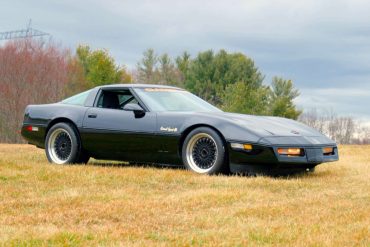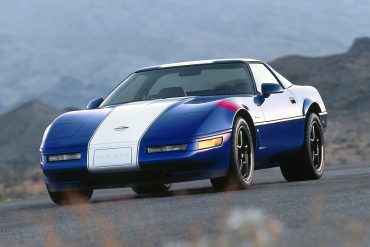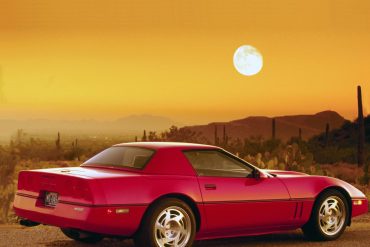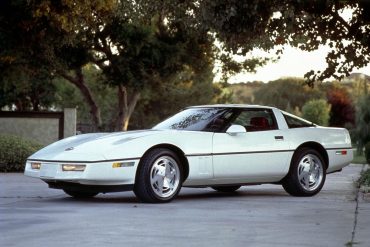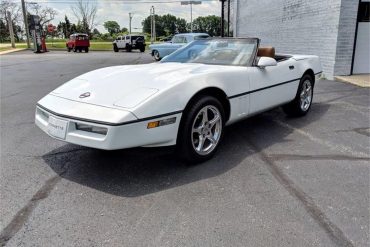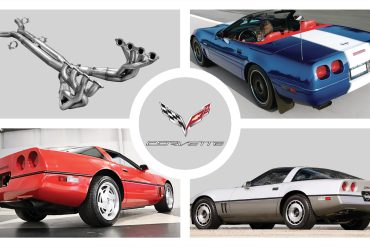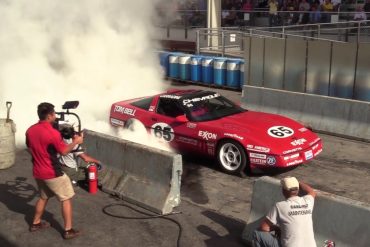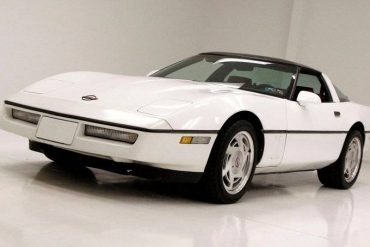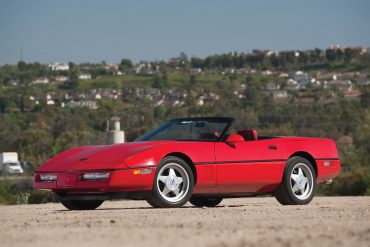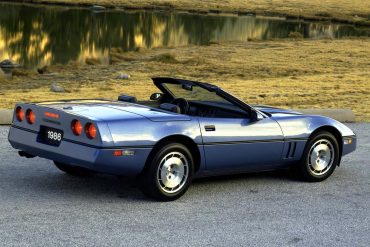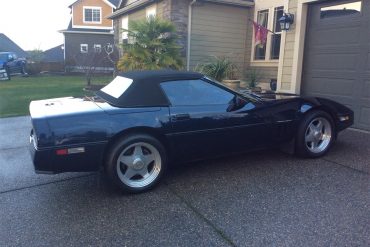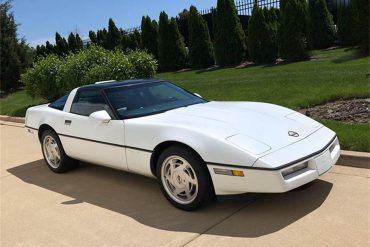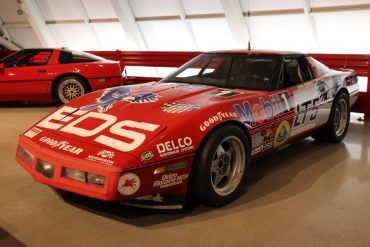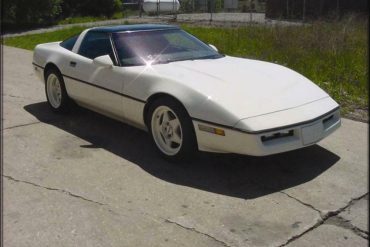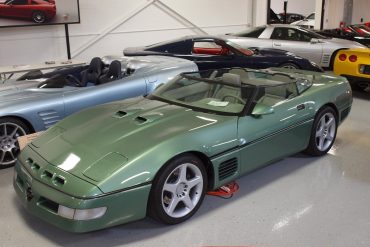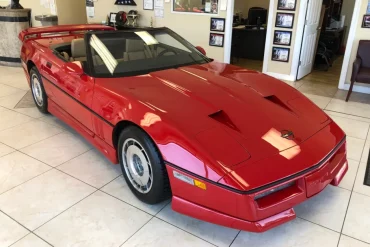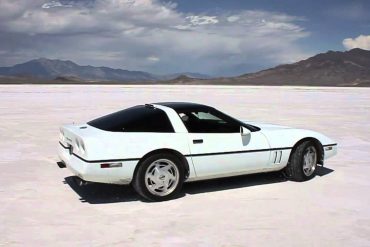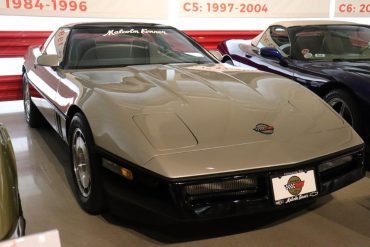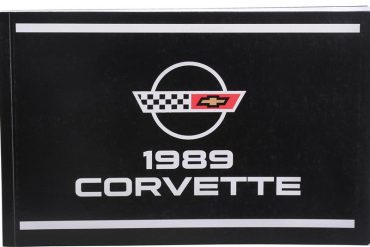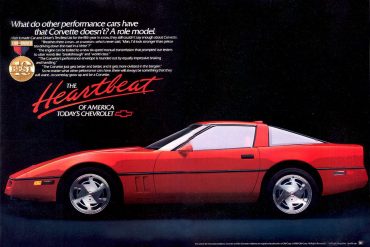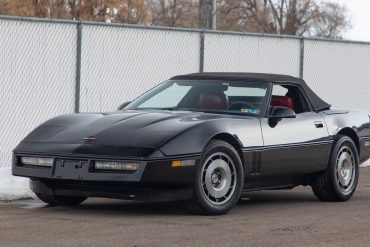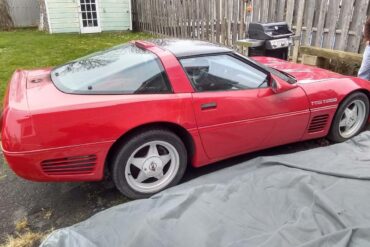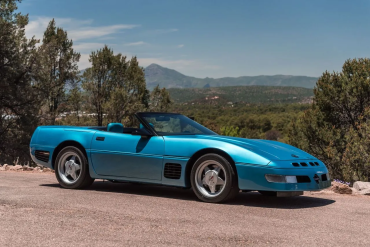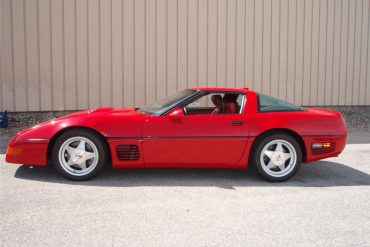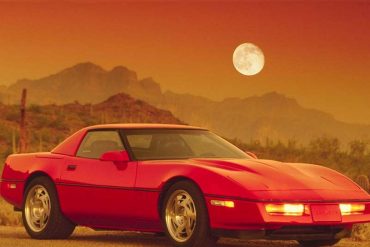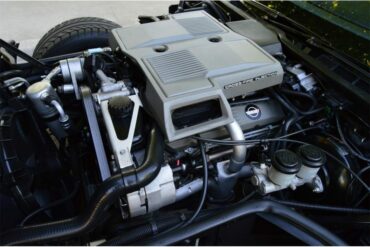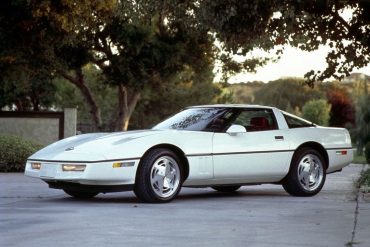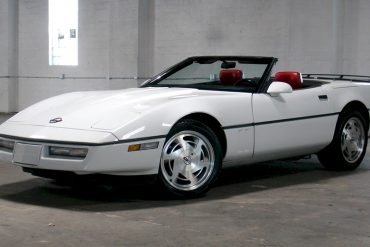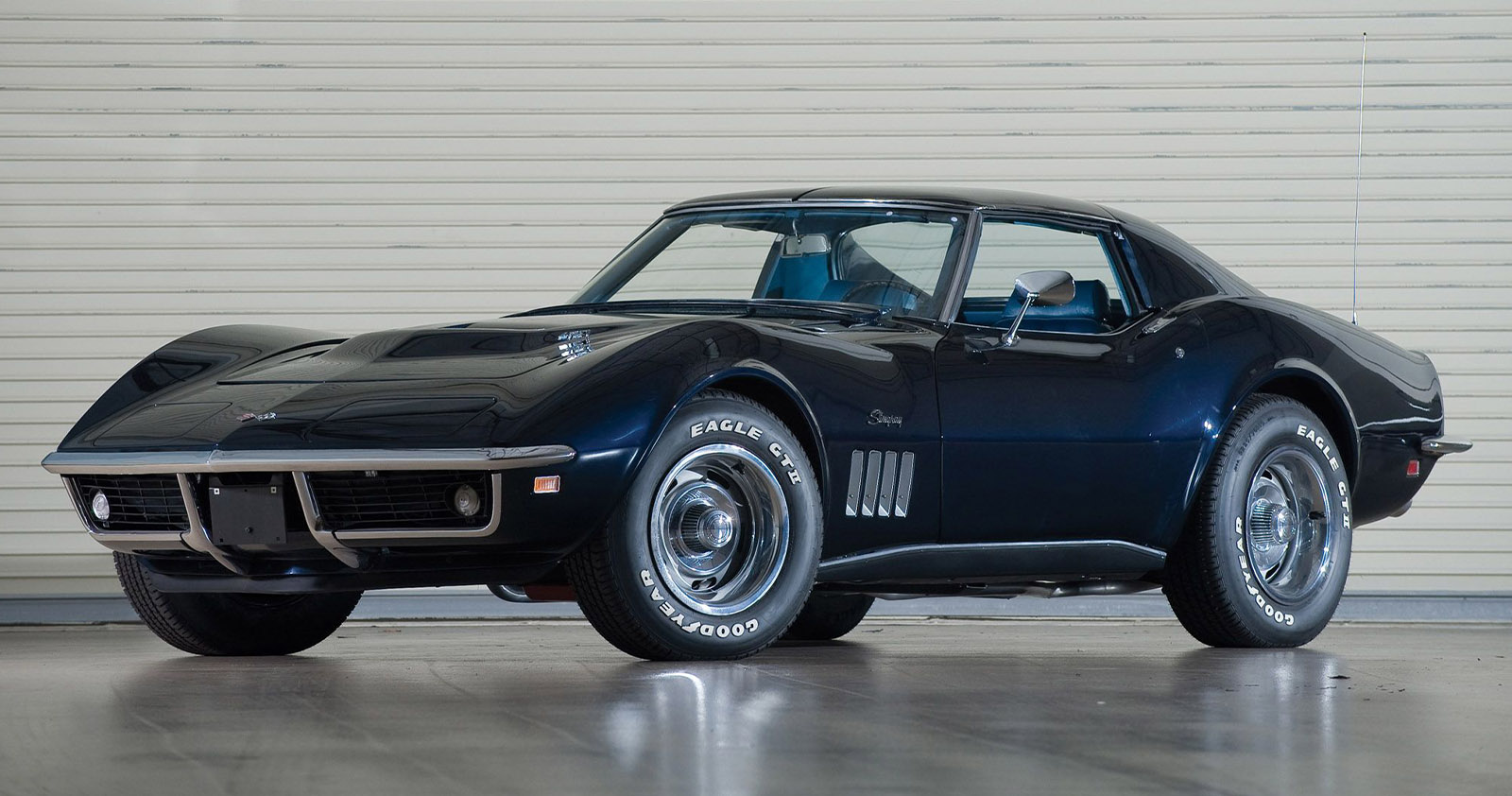When Dick Guldstrand introduced the GS80 series in 1986, the car was targeted specifically at Pro-Solo and autocross enthusiasts. He knew all about the needs of these groups, as he was a longtime provider of performance upgrades for the C3 and a direct supporter of a small team of racers from the Western Council of Corvette Clubs. Up to this point, Dick had basically been a tuner. With the intro of the GS80 he was venturing into the realm of small-volume manufacturing.
The early C4's had their problems, what with the 1984 Cross-Fire Injection and its unusual 4+3 manual transmission. By the late 1980's, the fourth-generation Corvette had evolved into a more desirable automobile, thanks in part to the arrival of the ZR-1.
For all 1989 Corvettes, the Vehicle Identification Number was stamped on a plate on the inner vertical surface of the left windshield pillar visible through the windshield.
Check out these great 1989 Corvette images. Just like the C3 was different from the C2, the C4 Corvette was...
Arctic Pearl 1989 Chevrolet Corvette We found some examples of 1989 Corvette in the Arctic Pearl color scheme. These real Arctic...
These are the top full exhausts for 1984-1996 Corvettes. The installation of a custom exhaust provides a great way to...
A 1989 Chevrolet Corvette Challenge Race Car doing burnout at the annual Carlisle Burnout Contest....
White Over a Red Interior The C4 Corvette was when the body style that more or less came to stay...
For the first time in several years, the 1989 model year would actually see an increase in the total sales numbers of the Chevrolet Corvette. Chevrolet sold a total of 26,412 Corvettes in 1989.
The following list of common issues is intended for individual reference only, and may not reflect the specific issues of every 1989 Corvette.
Black Sapphire 1989 Chevrolet Corvette We found some examples of 1989 Corvette in the Black Sapphire color scheme. These real Black...
See the complete technical specifications and performance information for the 1989 Chevrolet Corvette, including engine specs, acceleration, & quarter mile.
On March 1-2 1990 a unique group of people using a Chevrolet Corvette ZR-1, reset The 24-hour World Speed Record. That achievement proved unequivocally that the car is indeed...King of the Hill. "The 24" had stood for 50 years. Last set at Bonneville in 1940 by AP Jenkins driving the "Mormon Meteor Ill", a purpose-built. single-seat race car with an aircraft engine. The objectives: set the 24 as well as 5000 kilometer and the 5000 mile marks with a ZR-1 while using an L98-powered Corvette to set the six-hour record and other shorter distance marks.
In the late 80s, Chevy was developing what some dubbed a ‘Super Vette.’ But the 1989 debut of the Dodge Viper sent GM engineers on a new path to develop a ‘Viper-Killer.’ It started with a factory test mule and the experiment was to see how a ZR-1 would perform if given more power and less weight. It was so fast it was called "Snake Skinnner", for it's ability to beat the Viper and Cobra.
In 1989 Callaway introduced a Speedster which was the culmination of their styling, engineering and trimming talents. Their first example was a bright green ZR1, which had a severely chopped windscreen, no side mirrors, eighteen inch wheels and a vibrant blue leather interior stitched purposefully from Germany. Nothing about Callaway’s Speedster was reserved, and this is especially true when investigating the specification. The car had 450 horsepower.
Offered from 1987 to 1991, the RPO-B2K upgrade was available from any Chevrolet dealer and also Callaway’s first major Corvette tuning program. Together, GM and Callaway made the upgrade package a Regular Production Order (RPO) which was the first time GM had outsourced such an option to a specialist manufacturer. It even had a factory back warranty. As the C4 updated, so did Callway’s program and by 1988, the B2K was pushing 382 bhp and 562 ft. lbs. of torque.
Download this 1989 Corvette Dealers Sales Brochure for a quick look at the features of the car. Corvette has been blowing the competition into the weeds since Sebring '56. From Turbo-Fire V8s to Tuned-Port Injection, the machine has generated its own mystique - and legions of....
1989 C4 Corvette Ultimate Guide. History, Production Stats & Facts, Engine Specs, VIN Numbers, Colors & Options, Performance & Much More, we cover it all.
After a yearlong hiatus leading to a non-existent 1983 production run, the completely redeveloped fourth-generation Corvette emerged onto the scene...
This Owners Guide contains important information regarding the operation and maintenance of your 1989 Corvette. In order to obtain maximum enjoyment and usage from your car, we suggest that you familiarize yourself with the contents...
1989 Corvette Ads We have curated a cool list of all the 1989 Corvette advertisements, commercials and posters we could...
Gray 1989 Chevrolet Corvette We found some examples of 1989 Corvette in the Gray color scheme. These real Gray paint pictures of real 1989...
We Found a 1989 Callaway Twin Turbo Corvette For Sale on Craigslist – It’s Almost Too Good To Be True!...
In 1989, Callaway introduced a Speedster which was culmination of their styling, engineering and trimming talents. Nothing about Callaway’s Speedster...
1989 C4 Corvette RPO Codes, Options Codes & Order Guide If you are looking to decode your 1989 Corvette RPO’s...
Nassau Blue 1989 Chevrolet Corvette We found some examples of 1989 Corvette in the Nassau Blue color scheme. These real Nassau...
How do you beat a slew of Fox-Body 5.0 Mustangs that seemingly dominated the roads in the late '80s? You take a 454 cu.-in. big-block engine and stuff into a C4 Corvette and call it "Big Doggie". An experimental vehicle used to determine how to convert from a small block to a big block. Its 454 big block V8 along with its orange paint make this high horsepower engineering study a one-of-a-kind standout in Corvette history. The car had as much HP as the '90 ZR-1 did and it was named "ZR-2" or "Big Doggie". Old dog, new tricks joke?
The C4 Corvette debuted to a frenzy of publicity and would ultimately enjoy a lengthy run, spanning 13 years of production. During this period, GM installed a number of memorable powerplants. Many of these engines proved to be quite innovative in design, even when saddled with newly-mandated emissions equipment of the era. The following is a comprehensive guide to powerplants of the C4 era.
C4 Corvette Car Covers Corvette Gray 7 Layer Waterproof Car Cover Made for all C4 Corvettes, this car cover with...
Looking for information on how to maintain your 1989 Corvette? We've curated resources to help you keep your Corvette in great shape for years to come!


